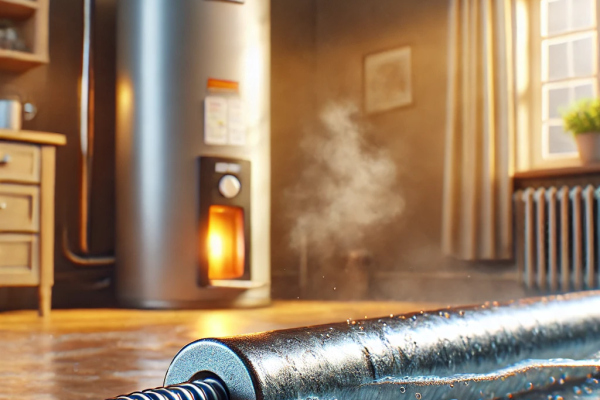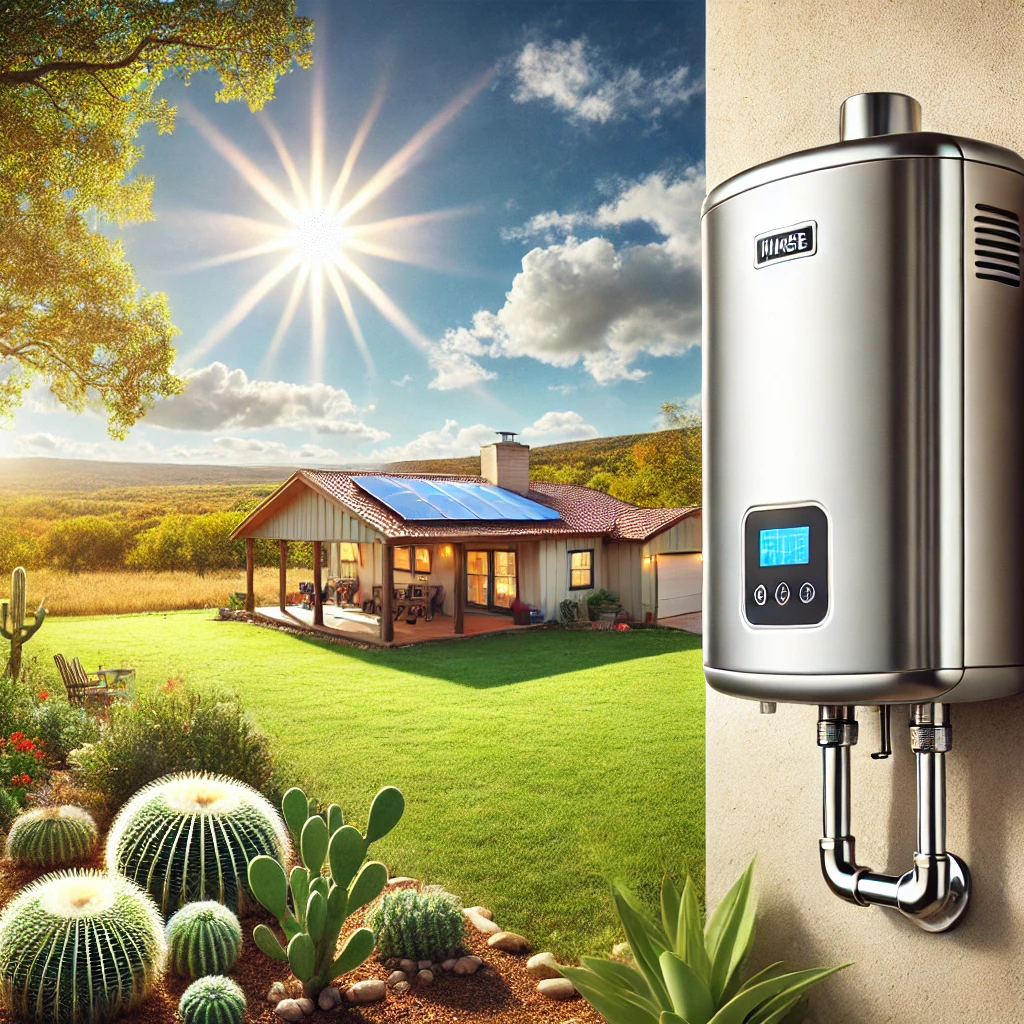
How a Simple Metal Rod Can Save Your Water Heater (and Your Budget)
Your water heater works tirelessly, providing hot water for daily activities like showers, laundry, and dishwashing. But did you know that an unseen battle against corrosion is constantly happening inside it? This battle is fought by a small yet crucial component—the anode rod. While it may not seem like much, this unassuming part plays an essential role in protecting your water heater’s tank from rust, ultimately extending its lifespan and preventing costly repairs. Let’s delve deeper into how the anode rod works, why it’s especially important in Texas' hot climate, and why it should never be overlooked.
The Anode Rod: A Hero That Sacrifices Itself
The anode rod might seem like a simple object—a steel core wrapped in a layer of magnesium, aluminum, or zinc. However, its job is far more significant than its humble appearance suggests. The anode rod’s primary function is to act as a sacrificial component that absorbs corrosion before it can affect the water heater's tank.
How the Anode Rod Protects Your Water Heater
When your water heater is filled with water, the metal of the tank comes into direct contact with it. This interaction can trigger corrosion, which, over time, can damage the tank and lead to leaks. To counteract this, the anode rod absorbs the corrosion instead of the tank itself. The rod is made of materials that are more chemically active than the steel tank, meaning that the corrosion process targets the rod first, leaving your tank intact.
In Texas, where water is often harder than average, the role of the anode rod is even more critical. Hard water accelerates the corrosion process, causing the anode rod to wear out more quickly. That’s why regular inspection and timely replacement of the anode rod is a must for homeowners in the state.
How Does the Anode Rod Work?
To fully understand why the anode rod is essential, it’s important to grasp the chemistry behind corrosion. Corrosion is an electrochemical process where metal loses electrons when exposed to water. This leads to material degradation, formation of rust, and, eventually, tank leaks.
The anode rod is made from metals that are more prone to losing electrons than the steel of the water heater tank. When the rod is intact, it absorbs the corrosive effects, protecting the tank. However, once the rod is used up, the tank becomes vulnerable to corrosion.
Why This Matters in Texas
In Texas, the combination of high water temperatures and hard water means the corrosion process can accelerate significantly. This is why it’s crucial for homeowners to have their anode rod inspected regularly and replaced when necessary. Annual checks can help ensure your water heater continues to function effectively, saving you from costly repairs or the need for a premature replacement.
Types of Anode Rods: Which One Is Right for You?
Choosing the right anode rod depends on your water quality and local water conditions. Let’s look at the three primary types of anode rods:
Magnesium Anode Rods
Magnesium anode rods are among the most common and are highly effective in preventing corrosion. They work best in areas with soft or moderately hard water. However, in places with very hard water, such as certain parts of Texas, magnesium rods may wear out faster.
Aluminum Anode Rods
Aluminum anode rods are often the preferred choice in areas with hard water, like much of Texas. Aluminum is less prone to wear compared to magnesium, but it can release aluminum compounds, which may be harmful to health. If you use hot water for cooking or drinking, it’s recommended to avoid aluminum rods, as they could contaminate your water supply.
Zinc Anode Rods
Zinc anode rods are similar to aluminum rods, but they contain a small amount of zinc. The zinc helps reduce the sulfur smell—often described as a "rotten egg" odor—that sometimes arises in hard water. If your water has this smell, switching to a zinc rod could be an effective solution.
When Should You Replace Your Anode Rod?
The lifespan of an anode rod generally ranges from 3 to 5 years, but in Texas, where water tends to be harder and temperatures are higher, the rod may wear out more quickly. It’s recommended that homeowners inspect their anode rods annually, particularly if they live in areas prone to mineral buildup.
Warning Signs That Your Anode Rod Needs Replacement
Here are some of the telltale signs that your anode rod may need replacing:
- Rust-colored water coming from your taps.
- A sulfur smell (reminiscent of rotten eggs).
- Difficulty in heating water effectively, which could indicate corrosion in the tank.
If you observe any of these issues, it’s essential to check the condition of your anode rod immediately or consult a professional to inspect and replace it.
How to Replace an Anode Rod
Replacing an anode rod is a task that many homeowners can handle on their own with basic tools. Here’s a step-by-step guide for replacing the rod:
Step 1: Turn Off Power and Water Supply
- For electric water heaters, disconnect the unit from the power source.
- For gas heaters, shut off the gas supply.
- Close the water supply valve to prevent any water from entering the tank.
Step 2: Drain the Tank
- Attach a hose to the tank’s drain valve and release enough water to reduce the pressure inside the tank.
Step 3: Remove the Old Rod
- Locate the anode rod (usually found at the top of the tank) and use a wrench to unscrew it.
Step 4: Install the New Rod
- Insert the new anode rod into the same opening and tighten it securely.
Step 5: Restart the System
- Restore the water supply and check for any leaks before turning the heater back on.
Benefits of Timely Anode Rod Replacement
Why should you make replacing your anode rod a priority? Here are the key benefits:
- Extend your water heater’s lifespan by an additional 5–10 years.
- Prevent leaks that can cause water damage to your floors and walls.
- Save money on costly repairs and equipment replacement.
- Ensure consistent hot water quality without unexpected temperature fluctuations.
Maintaining Water Heaters in Texas
Water heaters in Texas face unique challenges due to the high mineral content in the water and elevated temperatures. Here are some tips to help extend the lifespan of your water heater in this challenging environment:
Use Water Softeners
Water softeners can help reduce mineral buildup on your water heater’s tank walls and heating elements, which in turn prevents the corrosion process from accelerating.
Schedule Regular Maintenance
Annual inspections of your water heater can catch small issues before they become major problems, saving you from expensive repairs down the line.
Adjust for the Climate
During hotter months, the water in your tank can reach higher temperatures, which increases the rate of corrosion. Be sure to adjust your water heater’s thermostat to an optimal setting to prevent overheating.
Consider Solar Water Heating
Texas is blessed with an abundance of sunlight, which makes solar water heaters an attractive and eco-friendly option. Installing a solar water heater can save you money in the long term by reducing your energy bills and providing a sustainable source of hot water.
Conclusion: Small Part, Big Impact
While the anode rod may appear to be a minor component of your water heater, its impact is anything but small. It plays a critical role in protecting the tank from corrosion, which can significantly extend the lifespan of your water heater and save you money on repairs.
If you want to avoid expensive repairs and ensure that your water heater runs smoothly for years to come, make regular inspection and replacement of your anode rod a top priority. And remember, in the hot Texas climate, prevention is always more cost-effective than waiting for a major repair.






